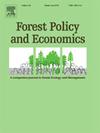Balancing investments in ecosystem services for sustainable forest governance
IF 4
2区 农林科学
Q1 ECONOMICS
引用次数: 0
Abstract
Economic instruments like subsidies and tax reliefs are widely used to promote forest ecosystem services. However, such instruments typically target services traded in markets, whereas non-market services are declining worldwide. With Norway as a case, we map economic instruments used in Norwegian forest governance and examine how they promote or constrain forests' capacity to provide different ecosystem services. Data was collected from a review of policy documents and fiscal budgets, compared with data on trends and condition of ecosystem services from Norwegian forests. Three main results are highlighted. First, the main economic instruments are markets for forest products and amenities, forestry certification schemes, and government expenditures. Second, ecosystem services traded in markets like timber (578 mill €/y) and hunting licenses (74.1 mill €/y) attract the lion's share of forest investments, amounting to around 652.1 mill. Euros per year, whereas aggregated investments in non-market ecosystem services like habitat provision (43.44 mill €/y) and carbon sequestration (2.53 mill €/y) remain an order of magnitude smaller. Third, most instruments target services for which forests show increasing capacity, while some services in poor condition or declining supply, are underprioritized or undermined through investments in competing services. Moreover, our results suggest that the current use of economic instruments primarily aligns with the sustainability pathways of green economy/green growth or nature protection. We argue that sustainable forest governance in Norway will require major reallocations of investments to support a broader array of forest values, combined with policy attention to alternative sustainability pathways.
平衡生态系统服务投资,促进可持续森林治理
补贴和税收减免等经济手段被广泛用于促进森林生态系统服务。然而,这些手段通常针对的是在市场上交易的服务,而非市场服务在全球范围内都在减少。以挪威为例,我们绘制了挪威森林治理中使用的经济手段图,并研究了这些手段如何促进或限制森林提供不同生态系统服务的能力。我们通过审查政策文件和财政预算收集数据,并与挪威森林生态系统服务的趋势和状况数据进行比较。其中强调了三个主要结果。首先,主要的经济手段是森林产品和设施市场、林业认证计划和政府支出。其次,在木材(5.78 亿欧元/年)和狩猎许可证(7410 万欧元/年)等市场上交易的生态系统服务吸引了大部分森林投资,每年约达 6.521 亿欧元。年)和碳固存(253 万欧元/年)等非市场生态系统服务的投资总额仍然少得多。第三,大多数工具针对的是森林能力不断提高的服务,而一些状况不佳或供应量下降的服务则未被优先考虑或因投资于竞争性服务而被削弱。此外,我们的研究结果表明,目前经济手段的使用主要符合绿色经济/绿色增长或自然保护的可持续发展途径。我们认为,挪威的可持续森林治理需要对投资进行重大重新分配,以支持更广泛的森林价值,同时在政策上关注其他可持续发展途径。
本文章由计算机程序翻译,如有差异,请以英文原文为准。
求助全文
约1分钟内获得全文
求助全文
来源期刊

Forest Policy and Economics
农林科学-林学
CiteScore
9.00
自引率
7.50%
发文量
148
审稿时长
21.9 weeks
期刊介绍:
Forest Policy and Economics is a leading scientific journal that publishes peer-reviewed policy and economics research relating to forests, forested landscapes, forest-related industries, and other forest-relevant land uses. It also welcomes contributions from other social sciences and humanities perspectives that make clear theoretical, conceptual and methodological contributions to the existing state-of-the-art literature on forests and related land use systems. These disciplines include, but are not limited to, sociology, anthropology, human geography, history, jurisprudence, planning, development studies, and psychology research on forests. Forest Policy and Economics is global in scope and publishes multiple article types of high scientific standard. Acceptance for publication is subject to a double-blind peer-review process.
 求助内容:
求助内容: 应助结果提醒方式:
应助结果提醒方式:


